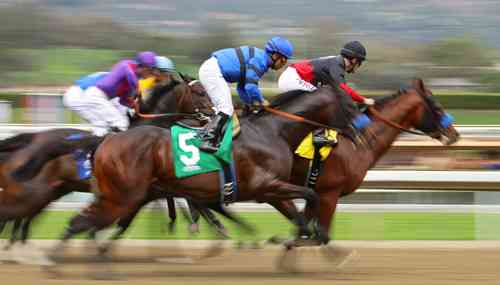 Have you ever wondered why sales contests work? What is it about salespeople that gets them so fired up around this basic idea?
Have you ever wondered why sales contests work? What is it about salespeople that gets them so fired up around this basic idea?
I’m currently reading a book called Top Dog: The Science of Winning and Losing and a while only partially through the book, a few things really jumped out in terms of why competition motivates people.
Objectively Understand Performance
People who are competitive enjoy competition because it serves as an objective representation of how they’re doing. Normally a salesperson can see their revenue numbers, and probably even sees it stacked up against their peers. But what about everything else they do all day? While every salesperson wants to be closing deals, more than 90% of their time is spent doing things that LEAD to sales. When a manager runs a contest, at least with our clients, they are often run around key activities that will lead to sales – booking meetings, pitching a new product, advancing deals through the pipeline, etc. The sales competition gives the salesperson a sense as to where they stand, and who’s doing well so they can learn from their peers.
50 / 25 / 25
In a study on competition, it was found that 50% of people that participate show significant increases in whatever behavior is being rewarded as compared to how they behave when a competition isn’t in place. 25% perform about the same, and 25% perform worse. When looked at in total, competition consistently improves collective performance. To quote the book:
The real benefit of competition is not winning – it is improved performance. Competition liberates, or generates, hidden reserves of additional effort. Competitors deliver an extra gear. And in the right circumstances, this happens even if you ultimately don’t win the contest. Competition facilitates improvement.
We consistently see this with our clients. At Dreamforce 2013, our clients will be sharing their stories on how competition significantly increased critical sales behaviors which resulted in multi-million sales gains. Competition is the difference.
Make It Close
According to research stated in the book, sales contests boost productivity by 10% to 50%. Maximizing those gains can be significantly impacted by how you set it up. Specifically, to group your participants based on ability versus a single contest for everyone. When people are matched up against people of varying skills, the top performers coast, the middle performers compete among themselves, and the bottom performers get frustrated. The best way to run a company-wide sales contest is to divide things up by group. Get your top performers in one contest, your middle performers in another, and your bottom performers in another. You don’t need to advertise where everyone is grouped, but when setting it up this way it drives the collective performance way up. Let people duke it out with people like them. The book shares a fascinating case study of how this concept worked to improve GPA performance at the US Air Force Academy. The good news is that we’ve made the process of managing a contest this way extremely easy within our sales incentive app for Salesforce.
Control the Size
Okay this one was crazy – the book shares a study of national SAT scores and the main point is that the density of the room of test takers has a dramatic effect on test results for each student. It’s called the “N-Effect”. The larger the number of students in the room taking the test together, the worse the outcome for the individuals in the room. Putting it into the context of a sales contest, the larger the number of participants, the lesser the results you’ll see. This coincides nicely with the previous point about grouping participants by skill.
This same point is also illustrated in sports – even if a team is low in a national ranking, conference games are highly motivating because the team may accept that they aren’t going to win a national title, but is still motivated to compete for the conference title. You can take this idea one step further with rivalries which pull out a whole new level of motivation, regardless of a teams overall record. The book shares a great example of the oldest rivalry out there, Harvard vs. Yale football. On 10 different occasions, Yale went into the annual game with an undefeated record but only walked away with a victory in three of those games. To quote the book again:
“There are always Cinderella stories in sports, but they’re random; you never know when they’re going to happen. Except with rivalries. Rivalries seem to create reliable upsets. Rivalry is like competition squared: it fans the flames of competitive fire.”
So the next time you’re planning a sales contest, take these ideas into consideration. In summary:
- Pick a behavior people can easily understand so they can objectively compare themselves
- Understand that some portion of the participants won’t change their behavior, but most will
- Group participants by skill
- Keep the number of participants in control


